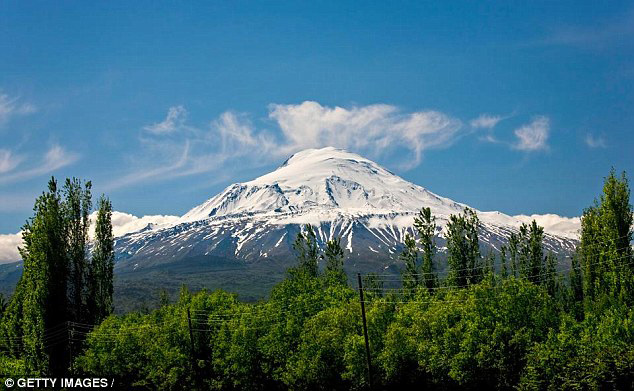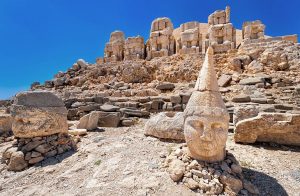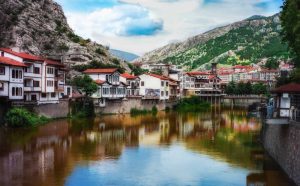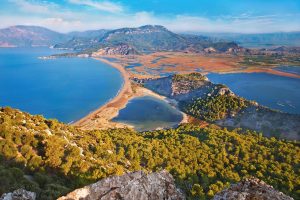Amazing Places in Turkey
***
Mount Ararat is located in Eastern Turkey on the borders of Iran, Armenia (formerly U.S.S.R.), and Nakchivan. This volcanic mountain rises 5,165 meters or 16,945 feet high, far above the plains that are at 2,000-3,000 feet high, and is the highest location in the ancient territory of Urartu, a region which covered tens of thousands of square miles with hundreds of mountains. Ararat is the newer Armenian name of Urartu from the Hebrew Torah written by Moses (c. 1400 BC), which only included the consonants “rrt”. However, the translators of the Bible replaced the “rrt” with the later name, “Ararat” or “Armenia.” The Assyrian kings wrote about battles against the Urartian tribes from the thirteenth century BC (c. 1286 BC) until the sixth century BC when Urartu was destroyed by the Medes. The name Urartu then vanished from history (until archaeologists re-discovered it in the 1800s) and was replaced by Ararat and Armenia in the vicinity as well as in English Bible translations, maps, etc. As history went on in the first and second millenia AD, the mountain became known as Ararat and the region as Armenia. Mount Ararat may be the largest single-mass or volume mountain in the world as it is huge (one really has to see it in person to appreciate its immensity) and rises to 17,000 feet from the plains surrounding it at 2,000-3,000 feet while most other large mountains are in a mountain range with less differential and base circumference. Ararat has only a few native trees growing on it in Ahora village, shrubs around Korhan, and several small forests on Little Ararat. Views differ as to whether Ararat formed much of its size after the flood (post-flood) or partially during the flood with post-flood uplift and lava flows. Some geologists like Clifford Burdick have found pillow lava (lava spewed into water, ice, or snow) up to the 14,000-foot level where the 17-square mile ice cap typically begins. However, since pillow lava may be formed with ice or snow water, it is not a convincing argument for a flood-time mountain creation. Geologists believe that cylindrical and very steep mountains like Little Ararat show that it is most probably a post-flood mountain. There are also claims of fossils and sedimentary layers on Greater Ararat but these claims have not been backed up with concrete evidence as of this date although there are evidence of fossils in the Ararat valley limestones from both the Geologist Abich and the explorers.




